Introduction of Weep Holes
Important Point
- Water is the biggest enemy of this structure. It is necessary to remove water from the structure as far as possible to prevent it from any further damages.
- There are many chances of entering water into the structure but the weep holes function is to pass water through it outside the structure.
- Weep holes are a small opening that is in a rectangular or circular shape that allows water to drain through it.
- Weep holes are mostly provided in the wing walls retaining walls masonry walls extra to remove water through it.
- In this article you will get to know about weep holes and its importance.
What Are Weep Holes?
Weep holes are the small opening which is in a circular or rectangular shape to escape rainwater from the building. Weep holes help to reduce the buoyancy and uplift on the structure and make it structurally strong and stable. The weep holes should be sized properly to overcome the surface tension.
The weep holes are generally provided by using sand drains which will help in the proper functioning of the Weep holes. The number of peoples which is provided in the structure depends upon the size and the length of the structure and height of the water table in that area.
Need for Weep Holes
When the structure is constructed above the water table then there will be no chance of accumulation of water behind the wall. In this case, there is no need for the provision of weep holes.
But if the structure is constructed below the water table then there will be extra pressure of water will be developed on the structure and it is necessary to provide weep holes to pass water through it.
The weep holes are the small openings that are provided mostly in the retaining walls, wing walls, external brick walls, underpasses, Bridge to remove the hydrostatic pressure which is developed.
Weep Holes Definition
Weep hole is the small opening provided in the structure to drain off the rainwater through it and reduce the hydrostatic pressure on the structure and prevent it from Structural damage.
The height at which the weep holes are provided depends upon the maximum height of the water accumulation of the groundwater table in that area.
Where Should Be Weep Holes Provide?
According to the principle of gravity, the water escapes from the lowest point of the structure. That’s why the weep holes are always provided at the bottom of the retaining walls for the masonry walls.
Weep holes are also provided above the door and below the windows. Weep holes that are provided in the brick masonry walls also helpful in the ventilation to allow air to the back of the wall.
Foundation Weep Holes
Foundation is one of the most important parts of the structure which translates the total of the structure into the underneath strata. There are different ways from which the water enters into the basement of the foundation of the structure.
There are many ways from which water enters into the building and the foundation of the structure. If the rainwater gets infiltrate in the foundation of the structure then it will cause the failure of the foundation and structural damage. To prevent these damages it is very necessary to provide foundation weep holes which help to escape water from the building.
Types of Weep Holes
There are different types of weep holes which are categorized according to their uses
- Open Head Joint Weep Holes
- Cotton Rope Wicking Weep Holes
- Tubes Weep Holes
- Corrugated Channels
#1. Open Head Joint Weep Holes
- Open head joint peoples are provided by Living out water from the joints. These types of weep holes are open holes of the same size as the typical spacing of the joints.
- The open head joint process is one of the common and effective methods which are used to evaporate water from the cavity. Depressing which is provided between the open hip joint weep holes is 24 inches.
#2. Cotton Rope Wicking Weep Holes
- Cotton rope wicking weep holes are formed by using the rope of 12 inches in length. This type of weep holes are placed in the joints and the other end is extended to the cavity wall.
- The water from the back of the wall is absorbed by the Cotton and on the other side, it gets evaporated. This process is low as compared to other types of weep holes.
#3. Tubes Weep Holes
- Tube wells are formed with the help of hollow plastic or metal tubes which are spaced around 16 inches from each other. The Tube weep holes are installed at a slight angle to allow water to drip out easily and care should be taken that the angle should not be too steep.
- Sometimes a Shallow layer of gravel is laid to prevent the water from dropping from the blockage of the tube weep holes.
#4. Corrugated Channels
- Corrugated channels are the latest technology in the weep holes which helps to quickly drain off water from the multiple channels. It is installed at the bottom side of the bed joint of the mortar.
Also, Read: Fish Ladder | What Is Fish Ladder | Types of Fish Ladder | Fish Ladders in Dams
Weep Holes In Retaining Wall
- Weep holes are provided at the bottom of the retaining walls which have to remove the hydrostatic pressure which is developed.
- Weep holes are small openings that are in a circular or square shape. Weep holes play a crucial role in the retaining wall to drain water from the retaining wall and decrease the hydrostatic pressure on the walls.
- Weep holes in the retaining wall prevents the damage of the wall and dampness on the wall. Weep holes in the retaining wall main consist of clay, plastic, or the metal pipe which is extending through the retaining wall to the layer of porous backfill.
Also, Read: What Is Pitched Roof | Types of Pitched Roof | Advantages of Pitched Roof
Functions of Weep Holes in Retaining Walls
There are various functions of weep holes in a retaining wall which is given below
- The main function of providing weep holes in the retaining walls is to reduce the hydrostatic pressure which is developed in the retaining wall.
- Weep holes in the retaining wall help to drain the rainwater out of the retaining wall.
- Weep holes are provided at the bottom side of the retaining wall which allows water to drain from the water lodge on the retaining wall.
- Weep holes in the retaining wall help to reduce the buoyancy and uplift on the structure and make it structurally strong and stable.
- Weep holes in the retaining walls help to prevent any further damages in the retaining wall.
- Weep holes protect the retaining wall from dampness.
- Weep holes also serve the most important purpose of ventilation in the retaining walls.
Need of Weep Holes In Retaining Wall
It is very necessary to provide weep holes in the retaining walls at regular intervals. If the retaining wall is constructed above the water table then there is no need of providing weep holes because the water will not collect behind the wall.
When the retaining wall is constructed below the water table when the unit weight of the soil will be considered as the submerged weight of soil. In this case, it is necessary to provide weep holes in the retaining walls which will help to reduce the hydrostatic pressure on the walls.
Window Weep Holes
- The window peoples are provided on the bottom side of these window frames. The window peoples act as a drainage system for your Windows.
- If the window weeps holes not draining properly then there may be chances of any blockage due to debris, paint, or any other element. It is very necessary to regularly maintain the window weep holes for its efficient functioning. Weep holes in shower are also provided to drain out water through it.
- Check window weep holes at least once a year before the rainy season. If the window weep holes are blocked then open them with the brush or screwdriver and clean it properly.
- If there are no weep holes is provided in the windows then you can install weep holes in windows at your home. You can make some holes with a drill into the window frame at the bottom side which will help to drain out rainwater and acts as a weep hole.
- when the weep holes are constructed in the brick masonry, the mortar between the successive courses of the brickwork may drop down in the weep holes which can cause the blockage of the weep holes. It is necessary to regularly maintain and clean the weep holes in Brickwork for its proper functioning.
- Weep holes are small opening which can provide access to the insects and small rodents. This can also block the weep holes to prevent this problem baffled vents are installed.
Weep Holes
A weep hole is a passage for water to escape a building envelope. Weep holes serve an important purpose of a home; they allow the home to “breathe” as some say. Since there are many chances for water to enter the home, weep holes allow for water exit.
Types of Weep Holes
- Open Head Joint Weep Holes: The open head joint process is done by leaving out mortar from the joints. This create open holes of the same size of the typical spacing of the joints. This is the most common method and most effective way to evaporate water from the cavity. The spacing between open head joints can be done at every 24 inches (61 cm)
- Cotton Rope Wicking Weep Holes: These type of weep holes are formed by using a rope of up to 12 inches in length. This is placed in the joints and the other end is extended up to the cavity wall. The water from the back of the wall is absorbed by the cotton and the on the other side it is evaporated
- Tubes Weep Holes: Weeps, or weep holes are used to drain water through a wall. Weep tubes line weep holes to ensure that draining water does not damage the surrounding wall with erosion over time. Made in standard sizes with durable plastic materials, weep holes can also be plugged or screened with ease to regulate drainage.
Weep Holes in Brickwork
In building construction, weeps are typically found in a masonry veneer or cavity wall, just above the flashing. The cavity serves as a way to drain this water back out through the weep holes. The weep holes allow wind to create an air stream through the cavity.
Weep Holes In Retaining Wall
Weep Holes are provided in earth retaining structures like retaining walls, underpasses, wing walls and other below ground drainage structures. From engineering point of view, Weep Hole is provided in these structures to relieve hydrostatic pressure or water pressure on the walls.
Window Weep Holes
They are small holes located on the bottom edge of storm-window frames, weep holes are drains for your windows. If they become blocked by debris, paint or caulk and can’t serve this vital function, water can seep into the wood of the sill and cause it to rot.
Weep Holes in Shower
Shower pans and tubs sometimes have a lip built into the flange that collects water, like a small gutter. The lip will have an opening at corners and/or ends to drain the water out and into the tub. When the weep openings are caulked over, the water cannot get out, so it collects and rots the inside of the wall.
Window Weep Holes Not Draining
Clearing clogged weep holes is the simplest, lowest-cost fix for window leaks. Remove fallen leaves, twigs, insect corpses and other objects that may be blocking these openings. Then clean the holes out with a cotton swab or bit of wire (the slow way) or a spritz of compressed air (the shortcut).
Open Head Joint Weep Holes
The open head joint process is done by leaving out mortar from the joints. This create open holes of the same size of the typical spacing of the joints. This is the most common method and most effective way to evaporate water from the cavity. The spacing between open head joints can be done at every 24 inches (61 cm).
Cotton Rope Wicking Weep Holes
The cotton wick, which became popular in the late 1980s, is nothing more than a 3/8-inch thick cotton rope cut into sections on-site and laid into the cavity, then extended through a head joint to the outside of the veneer.
Tubes Weep Holes
Tubes weep holes are formed by using hollow plastic or metal tubes. They are spaced around 16 inches apart. This tubes are placed at a slight angle to allow water egress. It must be made sure that the angle is not too steep or too flat.
Need for Weep Holes
A weep hole is a passage for water to escape a building envelope. Weep holes serve an important purpose of a home; they allow the home to “breathe” as some say. Since there are many chances for water to enter the home, weep holes allow for water exit.
Windows Without Weep Holes
Weep holes are necessary because the vinyl sill is the same shape as the window jambs, so that the tracks holding the window sash collect and contain water when they function as the sill in the lower horizontal frame position. Without weep holes, this water could not drain.
Why Do Some Windows Have Weep Holes?
Weep holes are openings built into the bottom of your metal or vinyl window frames, which are designed to drain off precipitation that collects in the window tracks. Clear weep holes are able do their job properly and won’t let the tracks overflow in heavy rain.
What Happens If Weep Holes Are Clogged?
If the weep holes are blocked, the water builds up and is forced into the walls and flooring in a two-story home, you may have damage to the first-floor ceiling. At the bottom of the pan there are three weep holes in the metal drain.
Weep Holes in Foundation Wall
Weep holes are installed during the initial construction process when the courses of masonry over the foundation are being put down. The weep holes are placed above grade, usually between 3 to 5 inches. This holes are made by leaving open cracks unfilled with masonry cement. Some masons use tubes surrounded by mortar.
Do All Shower Drains Have Weep Holes?
Most outside shower drains don’t have weep holes because they are not necessary. The drain is usually built into a concrete floor. There is no issue of water accumulation in the grout, so you don’t have to worry about something like weep holes. They would get blocked soon anyway.
Weep Holes in Basement Walls
Weep holes are drilled in the concrete blocks at the lowest level. Once the block has been drilled, water exits at the holes and flows directly into the drainage system. Weep holes have the added benefit of helping alleviate pressure on your foundation walls.
Weep Drain
A weep, a weep hole, or a weep-brick is a small opening that allows water to drain from within an assembly. Weeps are located at the bottom of the object to allow for drainage; the weep hole must be sized adequately to overcome surface tension.
Do Basements Need Weep Holes?
If your foundation is made of concrete masonry units (otherwise known as CMU blocks, cinder blocks or concrete blocks), that’s when you’ll want to have weep holes in your waterproofing system. All this pressure can eventually cause water to leak into your basement and damage your foundation.
Basement Weep Holes
A basement weep hole is a small opening that will allow water to drain directly into your basement waterproofing system.
Can Water Come in Through Weep Holes?
This research demonstrated that even under truly extraordinary conditions water rarely enters the weephole and even if it does it cannot be blown high enough up in the cavity to create internal damp problems. To understand why, it’s important to look at the details of a correctly constructed cavity wall.
Foundation Weep Holes
Weep holes are installed during the initial construction process when the courses of masonry over the foundation are being put down. The weep holes are placed above grade, usually between 3 to 5 inches. This holes are made by leaving open cracks unfilled with masonry cement. Some masons use tubes surrounded by mortar.
Is It Ok to Cover Weep Holes?
Whatever you do, do not fill those weep holes. They’re an integral part of the drainage system to keep water from building up behind the brick. If allowed to contact any untreated lumber, this water will cause serious wood rot, mold and, eventually, structural problems with your home.
Are Weep Holes Bad?
Badness happens when your walls don’t have weep holes. Without weep holes, water has only one place to go – inside your home’s walls, leading to mold, rot, and unpleasant, expensive structural issues.
Clogged Weep Holes
Check weep holes at least once a year, before the rainiest season. If they’re clogged, open them up with a brush, a screwdriver or a toothpick. Clear away leaves, twigs and dirt that accumulate on the windowsill.
Weep Hole Drain
Weep holes are a vital part of your shower drain assembly. Typically, there are three such holes in the upper portion of the drain assembly, spaced evenly around the drain. The weep holes are small holes that connect to the main drain, allowing water that enters them to feed into the drainpipe.
What Is the Purpose of a Weep Hole?
The Masonry Design Manual describes weep holes as, ‘Openings placed in mortar joints of facing materials at the level of flashing, to permit the escape of moisture, or openings in retaining walls to permit water to escape.
Window Weep Hole Cover
Weep holes in vinyl windows allow water to drain out of the sill. Weep hole covers have one-way vents that prevent drafts and dirt from entering the home while still letting the water escape, as well as making the window more aesthetically pleasing.
Where Do You Put Weep Vents?
Weep holes are typically found in the outer masonry leaf of cavity walls, just above the flashing. They can also be found above windows, doors or other penetrations. They should be provided at regular intervals so as to allow any moisture collected by cavity trays to escape.
Like this post? Share it with your friends!
Suggested Read –
- Earth Fill Dams
- Difference Between Marble and Granite | What Is Marble and How Is It Made | What Is Granite and How Is It Made
- What Are Walls | What Is Interior Walls | Types of Interior Wall Materials | Types of Wall Construction | Types of Load Bearing Wall
- Building Layout | How to Building Layout | What Is Method of Layout of Building | Control Lines of Construction | Construction Layout
- Emulsion Paint Vs Oil Based Paint | Purpose of Providing Paints | Properties of Good Paint | Properties of Good Paint | What Is Oil Based Paint
- Difference Between Sketching and Drawing | What Are Conceptual Sketches | Architecture Concept Drawing | Types of Drawings for Building Design
- Definition of Shear Force and Bending Moment | What Is Shear Force | What Is Bending Moment | Relation Between Loading, Shear Force & Bending Moment
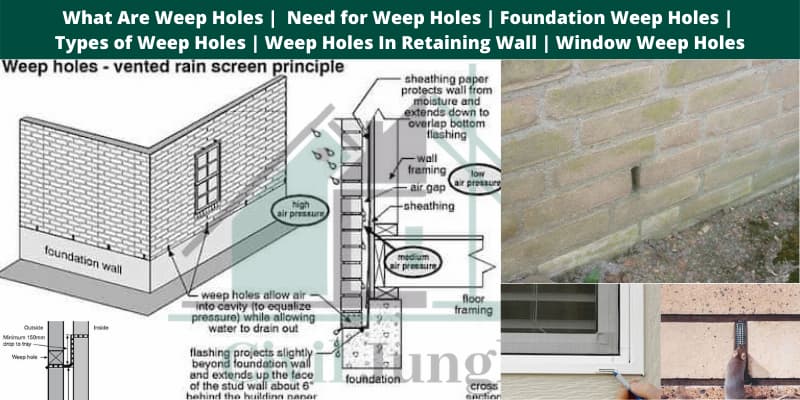
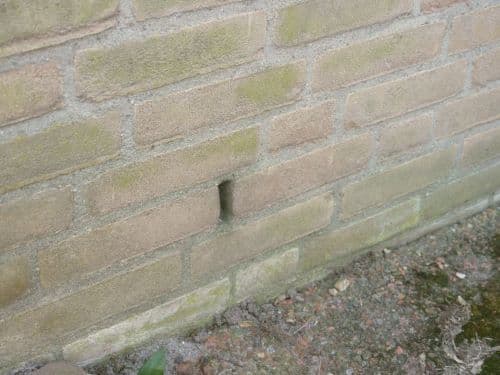
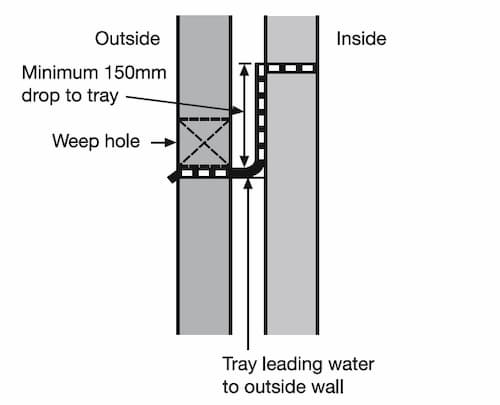
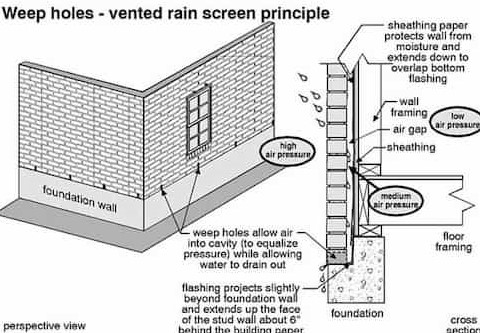
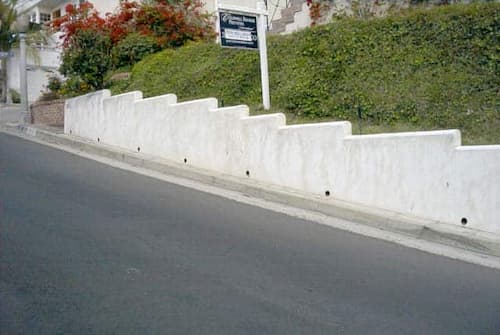
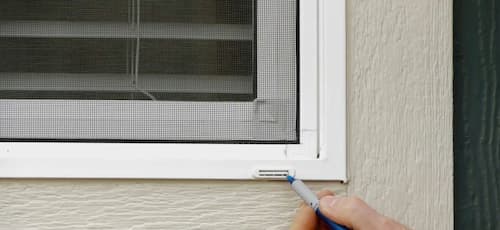

I like this post and very important one. I can use this tools for my work and it will easy my works. Thank You! If you want to buy boat accessories with great quality then click the Draining Tub